
How to Use (ECG) AFE with HR Detection AFE: Examples, Pinouts, and Specs
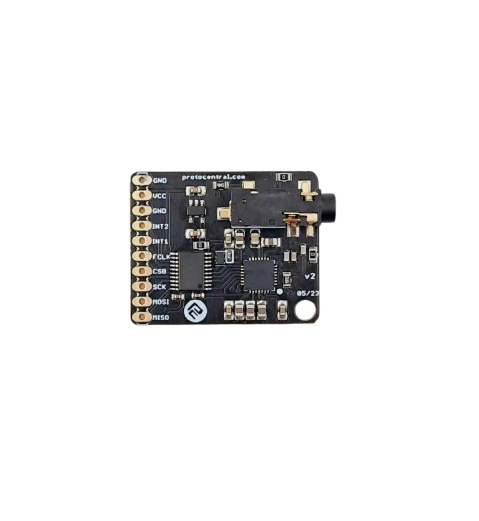
 Design with (ECG) AFE with HR Detection AFE in Cirkit Designer
Design with (ECG) AFE with HR Detection AFE in Cirkit DesignerIntroduction
The MAX30003 is an Analog Front End (AFE) designed by Analog Devices for Electrocardiogram (ECG) applications. It features heart rate (HR) detection capabilities, making it an ideal choice for medical and fitness devices. The MAX30003 amplifies and filters the small electrical signals generated by the heart, making them suitable for further processing and analysis.
Explore Projects Built with (ECG) AFE with HR Detection AFE
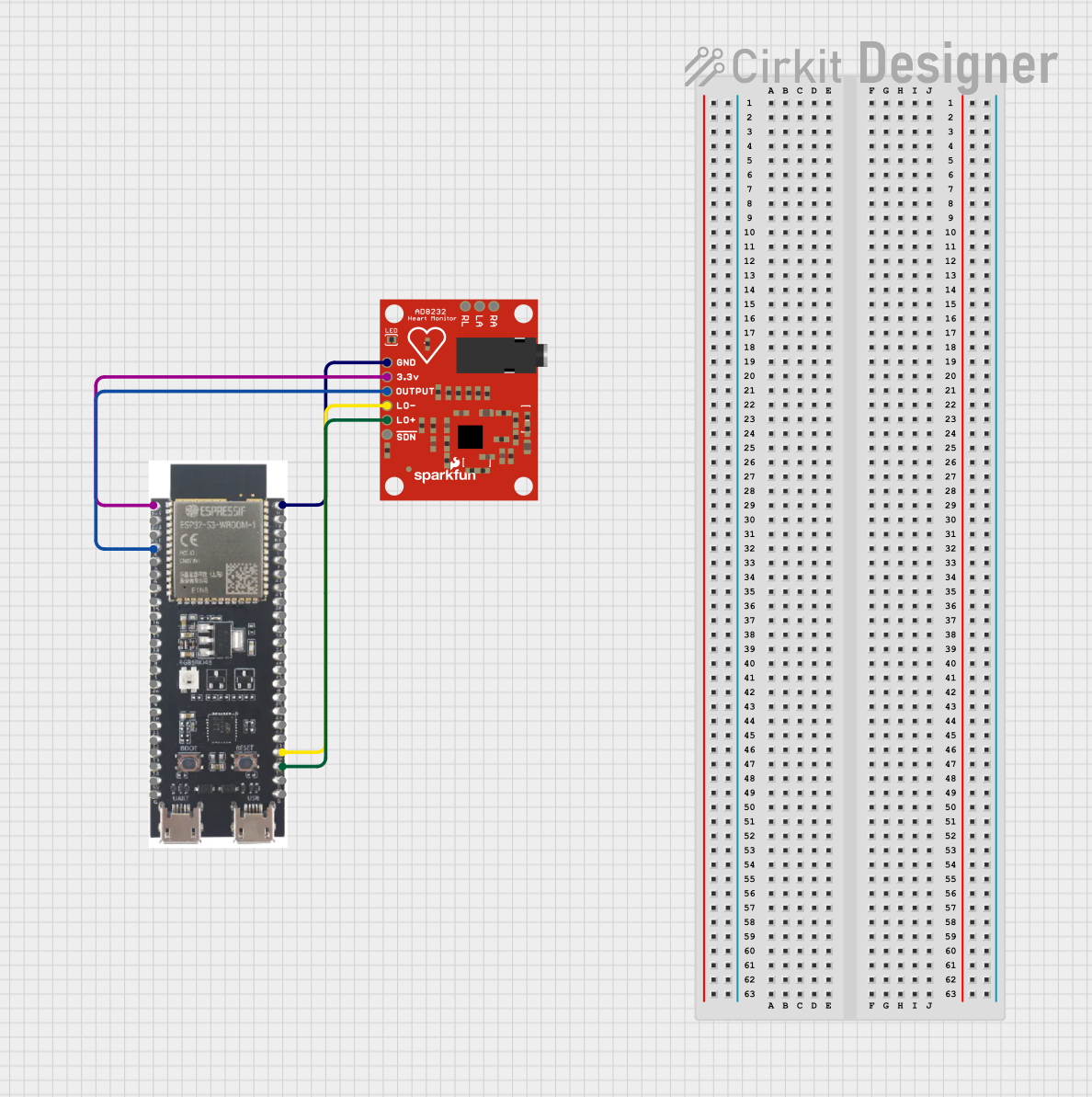
 Open Project in Cirkit Designer
Open Project in Cirkit Designer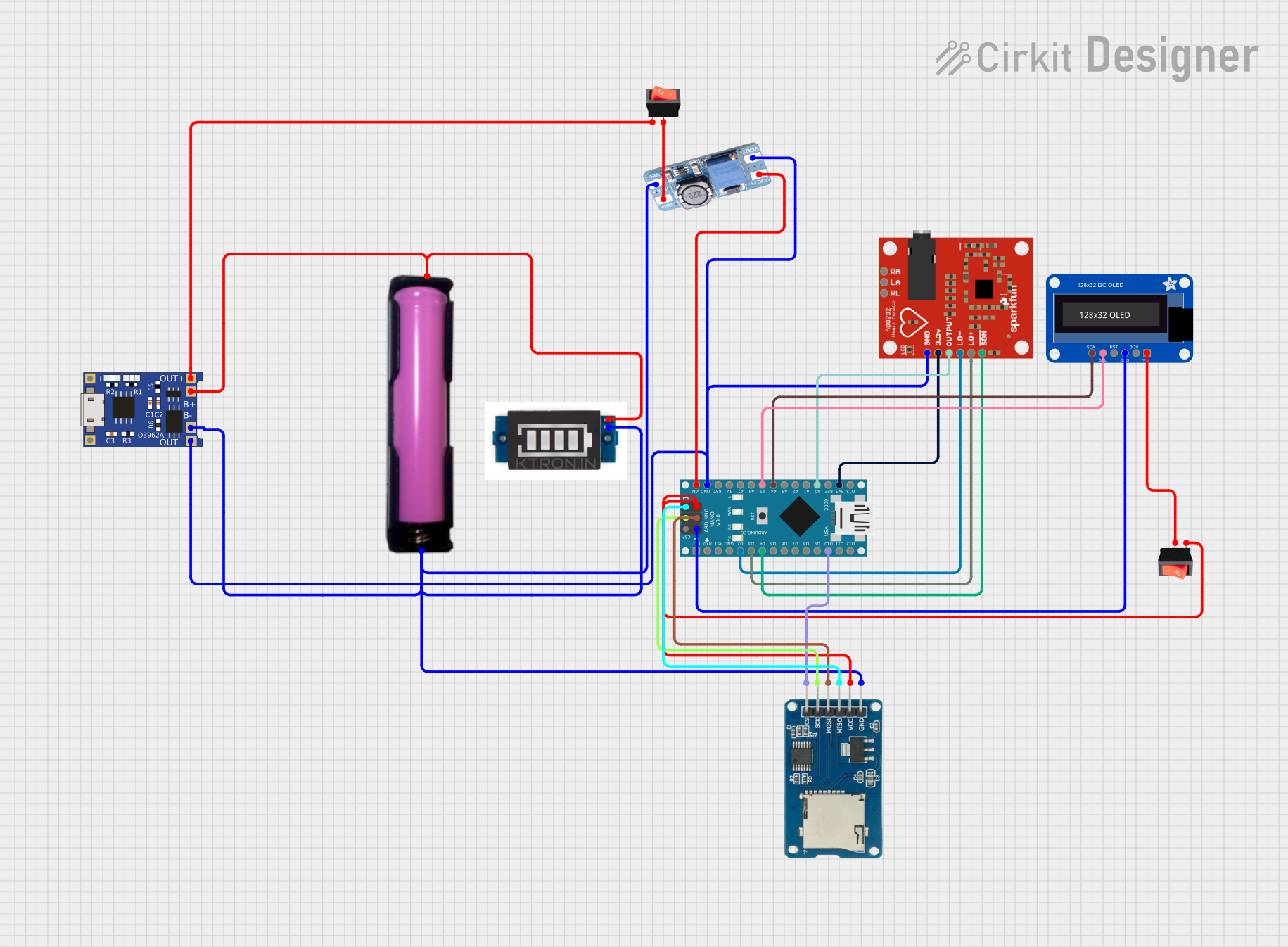
 Open Project in Cirkit Designer
Open Project in Cirkit Designer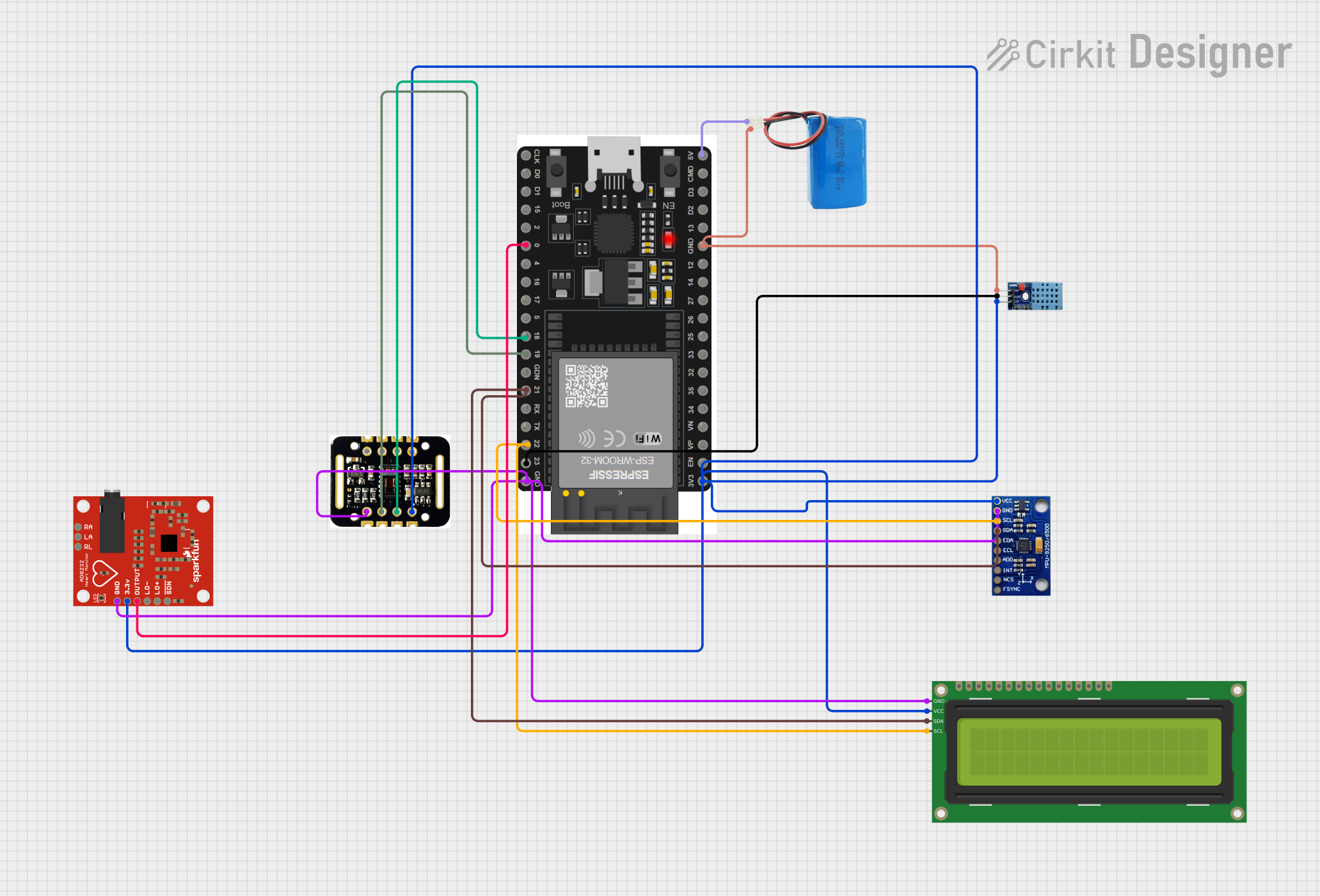
 Open Project in Cirkit Designer
Open Project in Cirkit Designer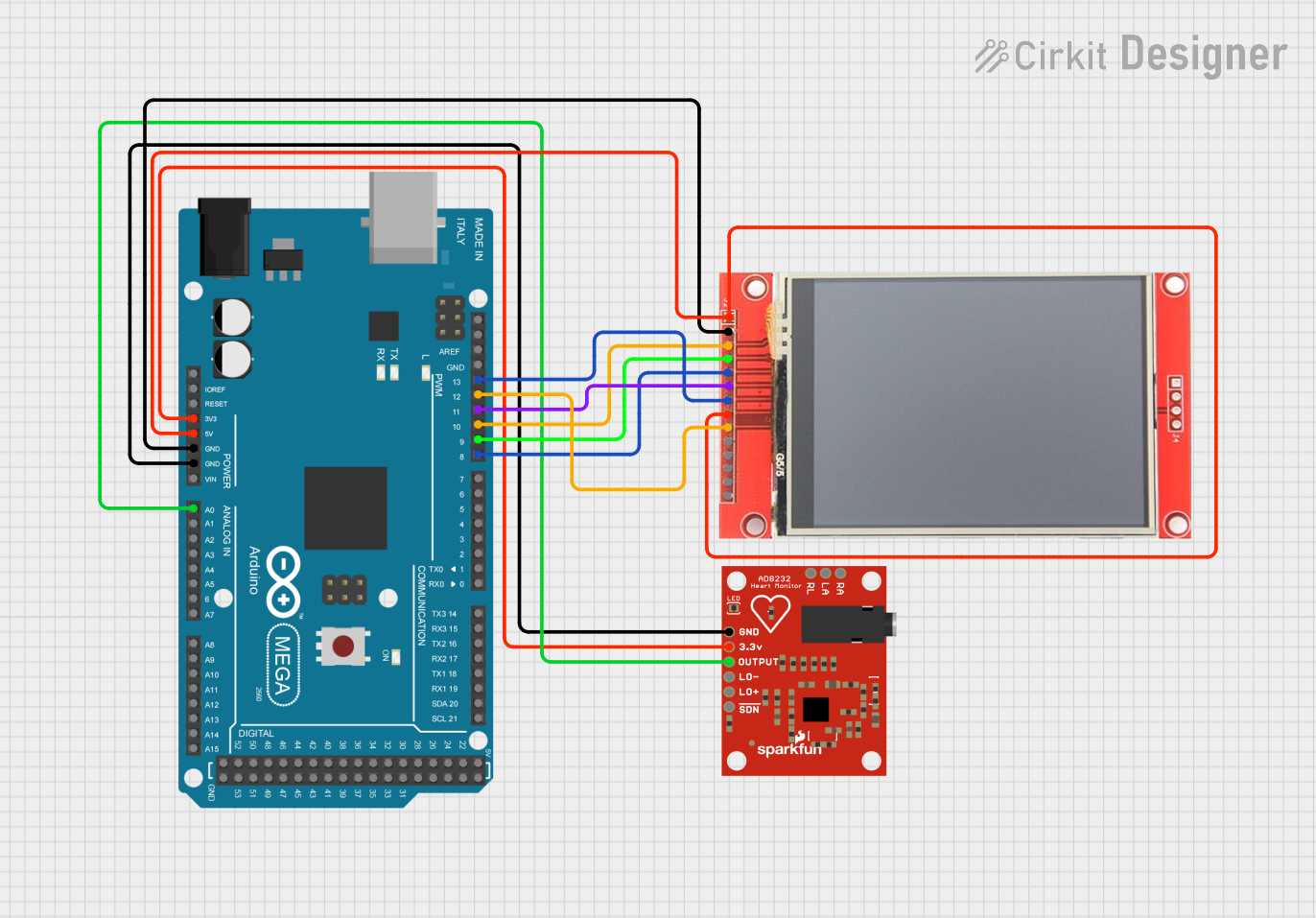
 Open Project in Cirkit Designer
Open Project in Cirkit DesignerExplore Projects Built with (ECG) AFE with HR Detection AFE

 Open Project in Cirkit Designer
Open Project in Cirkit Designer
 Open Project in Cirkit Designer
Open Project in Cirkit Designer
 Open Project in Cirkit Designer
Open Project in Cirkit Designer
 Open Project in Cirkit Designer
Open Project in Cirkit DesignerCommon Applications and Use Cases
- Wearable health monitors
- Fitness trackers
- Medical diagnostic equipment
- Remote patient monitoring systems
- Research and development in biomedical engineering
Technical Specifications
Key Technical Details
| Parameter | Value |
|---|---|
| Supply Voltage | 1.1V to 1.3V |
| Operating Current | 85µA (typical) |
| Input Voltage Range | ±300mV |
| Input Impedance | 500MΩ |
| Common-Mode Rejection | 100dB |
| Output Data Rate | 128Hz to 1024Hz |
| Temperature Range | -40°C to +85°C |
| Package | 25-bump WLP (2.1mm x 2.1mm) |
Pin Configuration and Descriptions
| Pin Number | Pin Name | Description |
|---|---|---|
| 1 | VDD | Power Supply (1.1V to 1.3V) |
| 2 | GND | Ground |
| 3 | IN+ | Positive ECG Input |
| 4 | IN- | Negative ECG Input |
| 5 | RLD | Right Leg Drive Output |
| 6 | CLK | Clock Input |
| 7 | CS | Chip Select (SPI) |
| 8 | SCLK | Serial Clock (SPI) |
| 9 | MISO | Master In Slave Out (SPI) |
| 10 | MOSI | Master Out Slave In (SPI) |
| 11 | INT | Interrupt Output |
| 12 | RST | Reset Input |
Usage Instructions
How to Use the MAX30003 in a Circuit
Power Supply: Connect the VDD pin to a stable power supply within the range of 1.1V to 1.3V. Connect the GND pin to the ground of the circuit.
ECG Inputs: Connect the IN+ and IN- pins to the electrodes placed on the patient's body. Ensure proper placement to get accurate ECG readings.
Right Leg Drive: Connect the RLD pin to the right leg electrode to improve common-mode rejection and reduce noise.
Clock and SPI Interface: Connect the CLK pin to a clock source. Use the CS, SCLK, MISO, and MOSI pins to interface with a microcontroller via SPI.
Interrupt and Reset: Use the INT pin to receive interrupt signals from the MAX30003. Connect the RST pin to a reset control line.
Important Considerations and Best Practices
- Electrode Placement: Proper placement of electrodes is crucial for accurate ECG readings. Follow medical guidelines for electrode placement.
- Power Supply: Ensure a stable and clean power supply to avoid noise and inaccuracies in the ECG signal.
- Filtering: Implement additional filtering in the microcontroller to remove any remaining noise from the ECG signal.
- Calibration: Calibrate the system periodically to maintain accuracy.
Example Code for Arduino UNO
#include <SPI.h>
const int CS_PIN = 10; // Chip Select pin for MAX30003
void setup() {
Serial.begin(9600);
pinMode(CS_PIN, OUTPUT);
digitalWrite(CS_PIN, HIGH);
SPI.begin();
SPI.setClockDivider(SPI_CLOCK_DIV16); // Set SPI clock speed
initializeMAX30003();
}
void loop() {
// Read ECG data from MAX30003
uint32_t ecgData = readECGData();
Serial.println(ecgData);
delay(1000); // Delay for 1 second
}
void initializeMAX30003() {
// Initialize MAX30003 registers
digitalWrite(CS_PIN, LOW);
SPI.transfer(0x00); // Example register address
SPI.transfer(0x00); // Example register value
digitalWrite(CS_PIN, HIGH);
}
uint32_t readECGData() {
uint32_t ecgData = 0;
digitalWrite(CS_PIN, LOW);
SPI.transfer(0x01); // Example command to read ECG data
ecgData |= SPI.transfer(0x00) << 16;
ecgData |= SPI.transfer(0x00) << 8;
ecgData |= SPI.transfer(0x00);
digitalWrite(CS_PIN, HIGH);
return ecgData;
}
Troubleshooting and FAQs
Common Issues Users Might Face
No ECG Signal Detected:
- Solution: Check the electrode connections and ensure they are properly placed on the body. Verify the power supply and connections to the microcontroller.
Noisy ECG Signal:
- Solution: Ensure a clean and stable power supply. Use proper shielding and grounding techniques. Implement additional filtering in the microcontroller.
SPI Communication Failure:
- Solution: Verify the SPI connections and ensure the correct clock speed is set. Check the CS, SCLK, MISO, and MOSI connections.
Solutions and Tips for Troubleshooting
- Check Connections: Ensure all connections are secure and correct.
- Verify Power Supply: Use a stable and clean power supply to avoid noise and inaccuracies.
- Use Proper Shielding: Implement shielding techniques to reduce electromagnetic interference.
- Calibrate Regularly: Periodic calibration helps maintain accuracy.
By following this documentation, users can effectively integrate the MAX30003 ECG AFE with HR detection into their projects, ensuring accurate and reliable ECG measurements.